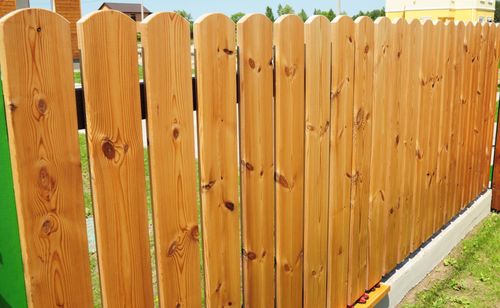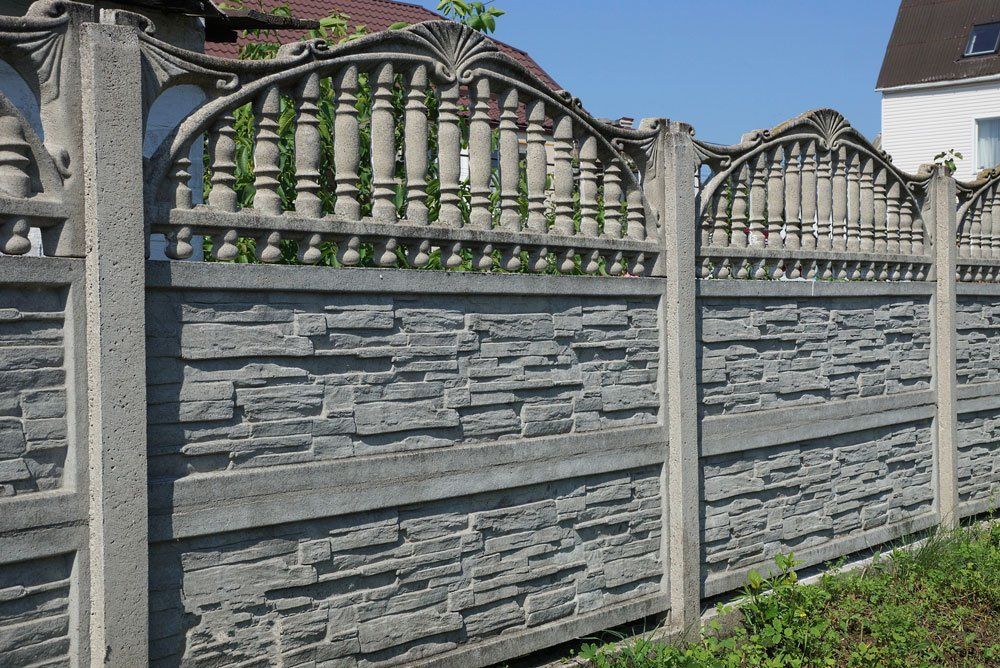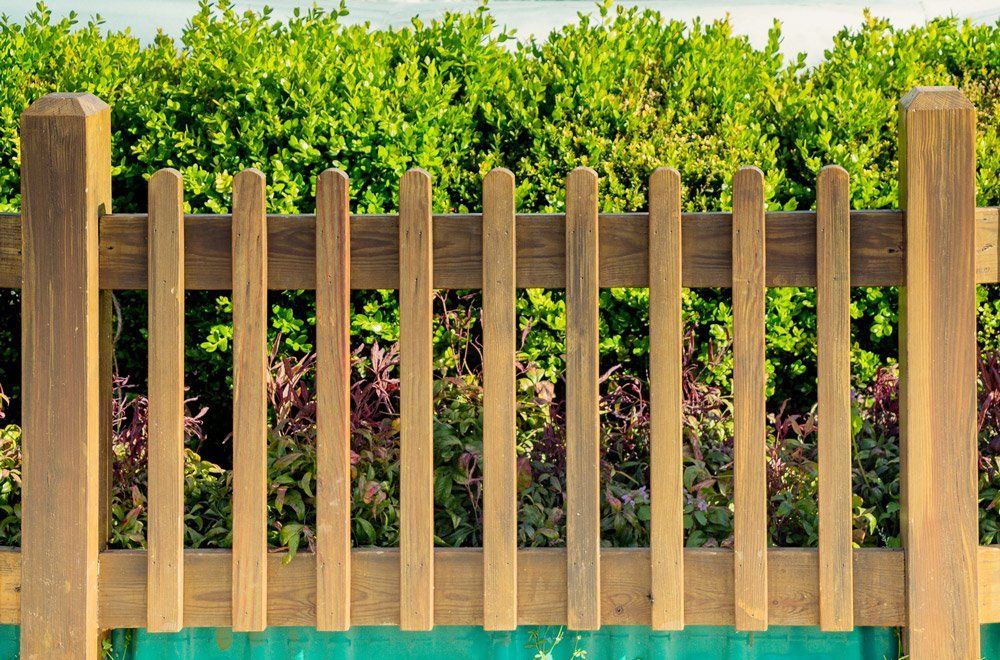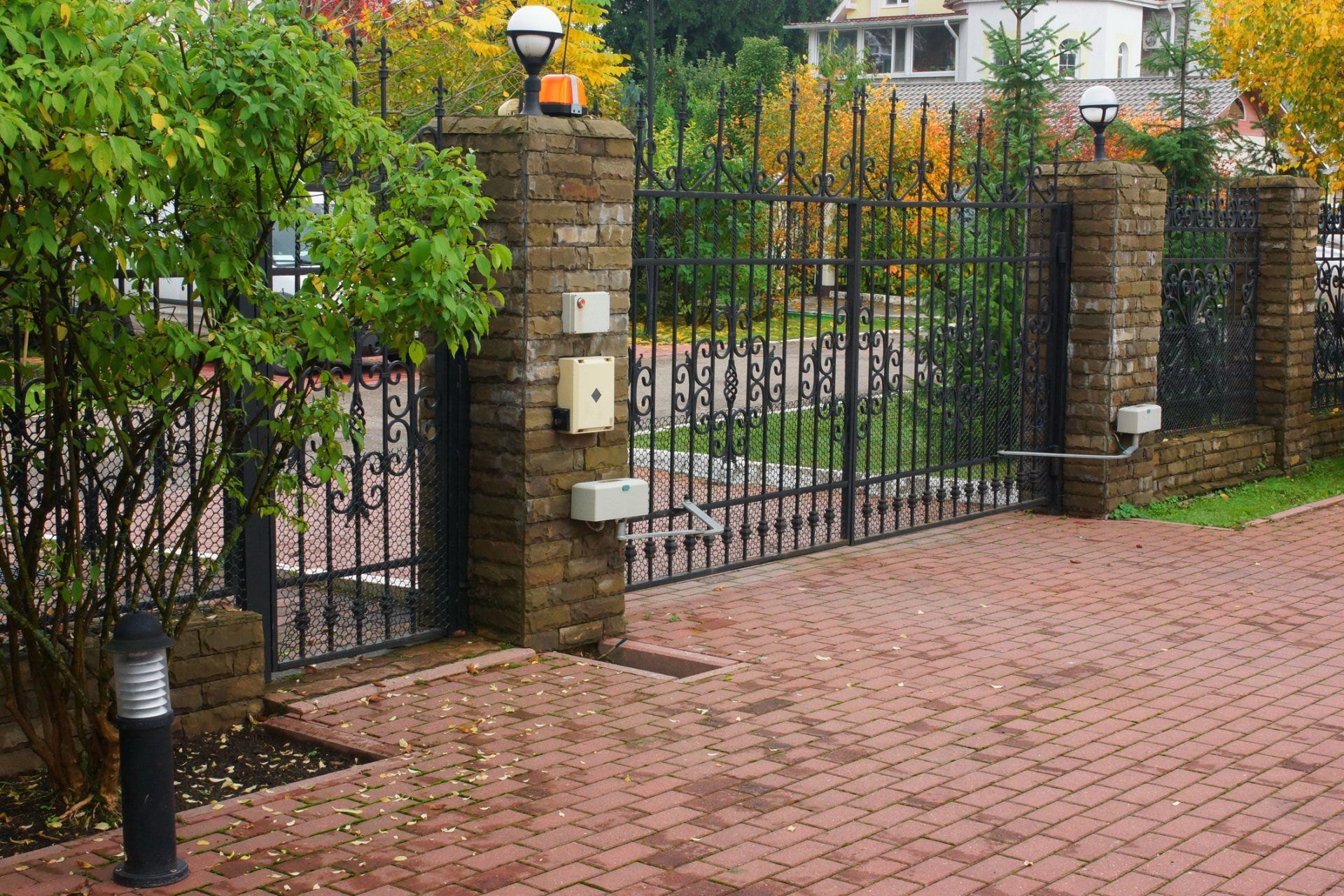
1. Improper Post Placement
Without a good foundation, your wooden fence will not be able to withstand heavy abuse and harsh weather conditions. Therefore, you need to make sure your posts are placed securely if you want your fence to look great and stand the test of time.
Choosing the right wood for your posts is imperative. You should only use treated wood fence posts, since they will be able to handle the different elements in the ground over time.
Proper preparation of the ground is also important. The post holes should be about 5 to 6 inches larger than the diameter of the actual post. For the most stable placement, set the post so that about one-third of it is in the hole and two-thirds of the post are above ground.
Pea gravel should be used in the hole for added moisture control, reducing the amount of moisture that will affect the actual fence post. Finally, concrete can be added to the hole to surround the post. A level tool should be used to ensure the post is being set into the concrete straight and stable.
2. Improper Wood Selection
All wood is not created equal, so you really need to take which wood is best into consideration when designing your new fence.
For example, your local climate is a factor to consider when choosing a wood for your new fence. If you live in an area that experiences a lot of rain, make sure to use treated wood only.
Also, heavy moisture not only leads to rot and decay, but also insect infestation. Fortunately, some woods are less appealing to insects than others.
Cedar, for example, has natural insect repellents. Even though it is more expensive than other woods, cedar does offer enormous appeal and durability.
Your budget also matters when choosing a wood for your new fence. Pine may be the most affordable option, but it will most likely not last as long as cedar, cypress, or redwood. Consider a higher-quality wood initially to make a smart long-term investment.
3. Improper Gate Design
Finally, many people design a great fence, but completely forget that they need one or more functional gates. Gates are important for accessing your fenced-in area, so make sure to choose the location and design of these gates carefully.
Make sure you have a gate in an area that allows access from your driveway/walkway. It is also important to have a gate in the back of a fenced-in yard, so you will have access to the other parts of your property.
Most manufacturers offer gates that are 4 to 5 feet high, but the width matters most. If you will be driving a vehicle or any lawn-care equipment, such as mowers or excavators, through the gate, be sure your gate is wide enough to accommodate vehicles and equipment.
Designing a wood fence that is functional, appealing, and valuable is possible by avoiding these common mistakes. To get started on your fence, contact Pioneer Fence Of Greenville today. We can help you with this process!






